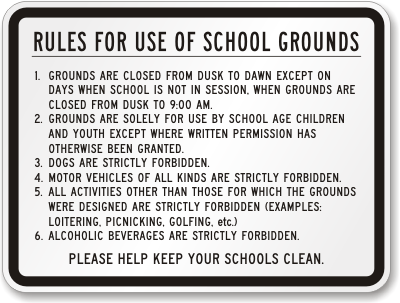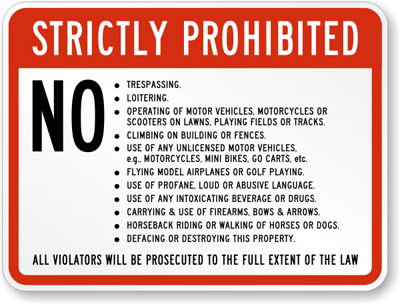A friend told me the other night that she was eagerly awaiting my next installment of our ongoing school saga. After homeschooling kindergarten through fifth grade, my daughter decided to try out public school this year.
 Probably the most surprising news for most people is that there is so little news. Because it was her choice and she knew that it was her responsibility to follow through on it, we’ve had little trouble with the daily details that many homeschoolers find difficult. She sets her alarm and gets up each morning 10 minutes before we do. (This is to allow for the quiet reading time that she always had at the beginning of the day.) She is actually eating a [mostly] healthy breakfast each day. (As opposed to our less successful homeschool approach, which was to let her read until she was finally willing to eat, as breakfast is her least favorite meal.) And she doesn’t enjoy having to do homework after being at school all day, but it’s never a lot and she puts in a decent effort.
Probably the most surprising news for most people is that there is so little news. Because it was her choice and she knew that it was her responsibility to follow through on it, we’ve had little trouble with the daily details that many homeschoolers find difficult. She sets her alarm and gets up each morning 10 minutes before we do. (This is to allow for the quiet reading time that she always had at the beginning of the day.) She is actually eating a [mostly] healthy breakfast each day. (As opposed to our less successful homeschool approach, which was to let her read until she was finally willing to eat, as breakfast is her least favorite meal.) And she doesn’t enjoy having to do homework after being at school all day, but it’s never a lot and she puts in a decent effort.
But the big question for her was never whether she would be able to deal with the daily grind. The big issue that comes up with any child like her, whether homeschooled or not, is fitting into an education approach that is at odds with her needs as a twice-exceptional learner.
We have been very lucky that her teacher is a caring and flexible educator, so we haven’t had to overcome the barriers that so many teachers set up in front of their unusual learners. But at its core, the American public education system is very unfriendly to kids like her in a variety of ways. Here are some of the major differences we’re noticing between school and homeschool education:
 1. The focus on weakness
1. The focus on weakness
When my daughter was young, I found that contrary to what I’d learned during my education, she learned much more when we focused on her strengths rather than her weaknesses. For example, she has strengths in science, reading, and conceptual math, so we focused on those almost exclusively in the early years even though she was clearly behind in writing and math calculation skills. Rather than subject her to “drill and kill” methods of inserting math facts into her brain, and rather than making her write more and more because it was difficult for her, we either went easy in those areas or at times ignored them altogether. Using this approach, she eventually brought her weaker skills along because they were required to fulfill her goals in her areas of passion. Though she seldom wrote an essay the way she would have in school, she willingly wrote long reports for her science fair projects. And realizing herself that math facts would help her do other math more easily gave her the internal motivation to work on skills that were hard for her.
The public school approach is quite different. She is in a class of 32 students who have all been taught to expect a teacher-led classroom in which they largely do the same assignments in the same way. Inevitably, this means that my daughter is required to do assignments that focus on her areas of weakness, rather than doing them in the context of a strength. She’s been pretty game to try (again, the influence of a caring teacher), but I know (and I suspect that she does also) that this isn’t the best way for her to learn.
We’re early in the process, but we’re also looking at whether we want to pursue the public school fix for this focus on her weak areas: getting an official stamp of approval on letting her have accommodations to help her learn. In homeschool, this is just how you do things. In school, you need official permission to let a child learn in the way that works for her. Quite a change for us!
2. The focus on “school skills” vs. “real-world skills”
American schools have a long tradition of having kids learn things that seem to have little or no application in the real world. One of the reasons for this is just historical: It takes us a long time to take something out of the curriculum once it no longer has a practical application in modern lives.
Another reason is that we can’t predict which kids will need which skills, so we make them all attempt to attain all skills. That’s why we make our budding actresses and chefs pass math and science classes that are not geared toward their future careers, while we force our budding engineers to enrich themselves with “fuzzy” classes that are aimed at teaching them college-level skills in a discipline they’re not going to major in. (As an aside, I will say that I heartily approve of encouraging people to become well-rounded learners – my beef is not with the concept but rather the execution of this goal.)
So to look at this through the lens of my daughter’s homeschool science projects, in the past she learned all sorts of things – history, writing, letter-writing etiquette, scheduling, geography… – in the context of a project that had a real-world goal. In school, all of these subjects are split up and taught, often isolated from each other, in the same way to each student. So the student who is passionate about geography because she has the goal of traveling to different countries gets the same assignment as the student who goes home and takes apart her household appliances.
In school, therefore, my daughter gets an assignment to write a Venn diagram about two of the characters in the novel she is reading. In homeschool, either she would have just read the novel, enjoyed it, and moved on, or she would have been so inspired by the story that she would have decided to write a screenplay or another story based on it, in which case she would have needed to master the goal of the Venn diagram exercise as an integral part of reaching her goal. No child will need making Venn diagrams as a skill in the real world, but many will need to understand how to compare and contrast in order to fulfill other real world goals. In school, this translates to Venn diagrams. In homeschool, we would have learned the same skills through self-led projects in her areas of strength.
 3. Following rules because they are rules, not because they are right
3. Following rules because they are rules, not because they are right
When our children were smaller, we had to deal with the inevitable result of the parenting choices we were making: If you raise your children to question authority, they will question your authority as well. In homeschooling, you deal with this by developing a “authoritative” rather than “authoritarian” relationship with your children. You welcome your children’s questioning of rules as part of their education.
In school, my daughter comes home daily with tales of school rules, how she likes them or doesn’t, how they make sense or don’t, how the children and adults follow them or not. One day I was waiting for her at the fence and she pointed out that I wasn’t standing in front of the area bearing the first letter of her last name. I protested that this was a rule for the children, not the adults, and then she cheerfully agreed that although it was a rule, she’d seen few children and fewer adults following it. She tells me about kids who don’t follow rules and don’t get called on it, and rules that she follows but she clearly thinks are unfair. The homeschooler/anti-authoritarian in me says that she should try to challenge illogical rules, but the practical me (the one who went to and dropped out of public school) tells me to advise her just to let most of it slide.
*
So it does seem as if our year-long social science experiment is going swimmingly. Her learning has largely been centered around social and cultural learning, and the homeschooler in me says that’s just fine. As long as she isn’t concerned about how her grades reflect her weaknesses much more than her strengths, and as long as she doesn’t come home demanding to go to a Miley Cyrus concert, I’m pleased with how much her time in institutional learning is teaching her lessons that aren’t necessarily in the curriculum. When she returns to homeschooling, I hope she’ll have a new respect for how homeschooling allows her to follow her passions, shine in her strengths, and use her strengths to address her challenges.
Note: Today’s reading included this article on asynchronous development, which touches on some of the problems that kids who aren’t developing at a normal rate can have at school.
Comments
4 responses to “From homeschool to school”
Love the update and so appreciate your points. We recently left a “prestigious” program at Santa Cruz High School because there was about 95% focus on the program and 5% focus on the students and learning. Might work for others but it was killing my kid. I sometimes miss homeschool so much it’s not funny. I loved the tailored learning and the fact she aced the STAR Tests even though she didn’t sit in a damn California classroom for a year.
No kidding. It’s funny when the tables are turned – usually it’s the parent who doesn’t want to or can’t homeschool. But some of us are born homeschooler parents with kids who want something else…
Thanks so much for this outsider’s/insider’s perspective on traditional school. I love all the lessons learning all the lessons and so appreciative that C is interested in participating in the experiment. I find it sad that the traditional school folks would probably reject a lot of your observations. The one size fits all approach to public schooling leaves so many kids feeling badly about themselves and it just seems nonsensical.
Seeing how things work in a public school classroom with a very dedicated teacher is really eye-opening. He does his best at differentiation, but how can we expect a teacher with 32 students to do the level of education we want? We as a society need to get behind offering educational alternatives, and need to find better ways to measure “success.” I remember reading about a study that showed that charter school students didn’t do any better on standardized tests than other students, so the article concluded, “We shouldn’t invest in charter schools.” Having participated in a wonderful charter school for a couple of years, I knew that it was an absurd conclusion: The parents weren’t there for the test scores. They were there for the incredible community, parent participation, and child-focused curriculum. Their test scores, like all test scores, were based largely on the socioeconomic background of the students. But there is no denying that the school was a “success” for those students, because many families found the right place for their kids and themselves there. Another local mom and I were dreaming about being able to send our kids to a small, charter middle school near our home. The only problem is, the place doesn’t exist and won’t, unless there is a huge change in attitudes toward public education (and a huge shift in the administration of our district, which is another large story). If my daughter continued to enjoy school, I’d be happy to send her next year, except that there is no school nearby that would fit her needs for middle school, the only one in our district is full up, and when you transfer out of your district into alternative programs, you get put at the bottom of the list behind in-district students. It’s a crazy system that isn’t set up to fill the students’ needs, and very frustrating! Thanks for your comments – Suki